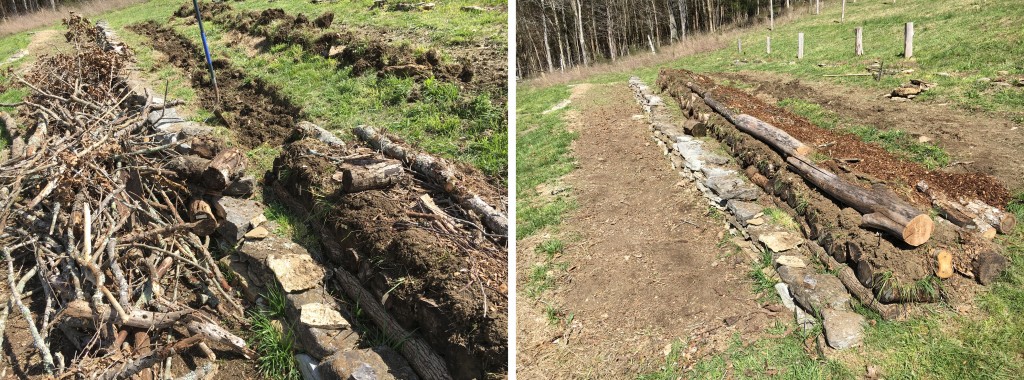
Hugelkultur is German for “hill culture.” It’s a composting method that allows you to grow food while longer decay processes break down large volumes of buried or mounded wood. It’s an amazing way to sequester carbon and help reduce CO2 outputs that recently have been measured at record levels along with record setting heat. It’s also something you can commit to doing right now to make a difference this Earth Day.
The problem: According to a 2010 report by the EPA, the total global emissions of carbon since the Industrial Revolution are estimated at 270 F 30 Pg (Pg = petagram = 10*15 g = 1 billion ton) due to fossil fuel combustion and 136 F 55 Pg due to changes in land use and agriculture. That’s 400 metric tons of carbon. The potential of soil organic carbon sequestration through composting is roughly 1 F 0.3 Pg C/year, or 1/3 the annual increase in atmospheric CO2 per year (which is 3.3 Pg C/year).
A backyard solution: All of that simply means composting yard wastes could reduce the annual increases in carbon output over the next 20 years by 30%. That’s not through an act of Congress or demanding corporations do anything. That’s a 30% reduction made by each of us in our own backyard. Composting yard waste simply takes all the carbon that your trees and plants sucked out of the air and puts it back in the ground (sequester) where it increases the health of soil, reduces the need for chemical fertilizers, increases water conservation and reduces CO2 emissions. When we burn yard wastes or send food wastes to landfills, we release stored carbon and converted methane into the atmosphere and become part of the problem.
How to make a hugelkultur: The process is pretty simple and a perfect way to get rid of brush, control erosion, retain water and create carbon-rich beds that will produce a lot of food. One thing we’ve added to our hugelkultur beds is old mushroom logs we hope will fruit as well.
- Collect carbon: this can be sticks, logs, wood chips, leaves, dried or freshly cut weeds. If you can keep a brush pile going for years, the decaying wood makes a great addition to kick-start the compost process.
- Dig a trench in the shape of the bed or hill you want. If you are addressing erosion, keep the trench along contours to capture or slow surface water. 2 feet is deep enough.
- Place a thin bed of stick in the bottom and then place your largest logs on top of that. Surround the log with more sticks and cover with wood chips and some of the dirt you dug up.
- Super charge your hugelkultur with mushroom logs. Myceliated mushroom logs will break down quicker while also producing edible and medicinal mushrooms. There is naturally occurring mycorrhizal fungi in healthy soil that will network itsway through your hugelkultur, but you can also introduce various fungi in a powerful way.
- Cover with dirt and compost if you want to immediately plant in your bed or mound. Cover with nitrogen inputs like green manure (fresh grass or weed cuttings) or animal manure if you plan to plant next season.

You will notice the bed adjust quickly after a few rains followed by a slow decay that makes the surface sink. Over time, the heavier logs will disintegrate. What’s happening is mycelium, microbes, insects and decomposition are making a rich mix of carbon and nutrients for whatever you want to plant. You can plant perennial herbs or annual fruits and vegetables for years as long as you continually amend with inputs from your property. The two beds pictured here took about 1.5 tons of carbon inputs this year alone.

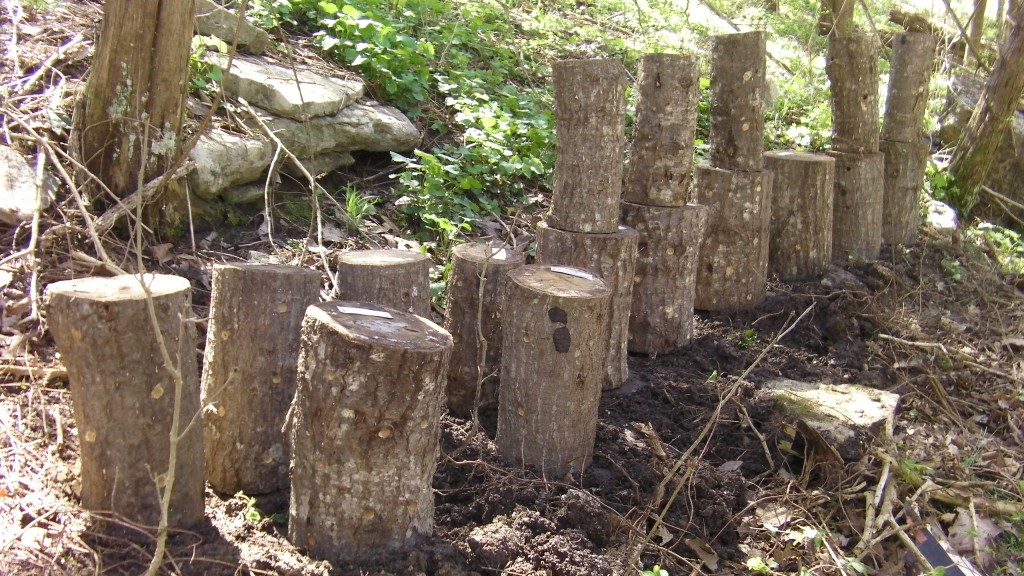 Shiitake mushroom logs in the woods at half Hill Farm
Shiitake mushroom logs in the woods at half Hill Farm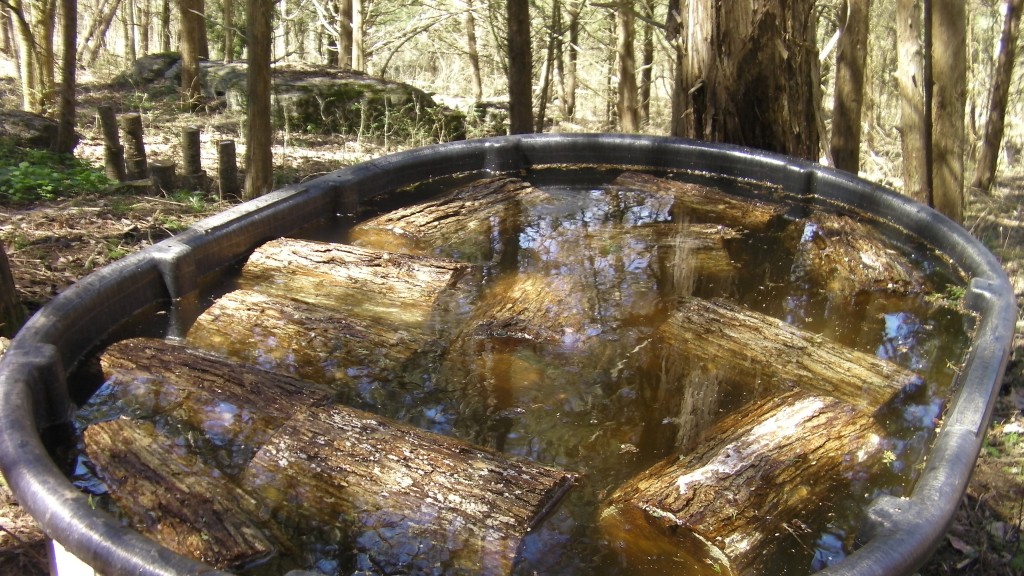
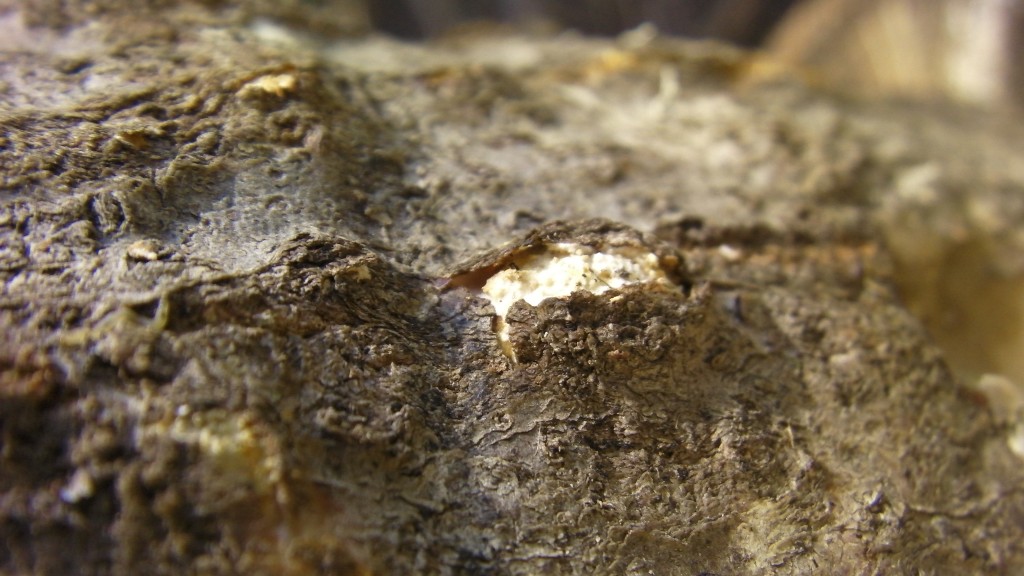
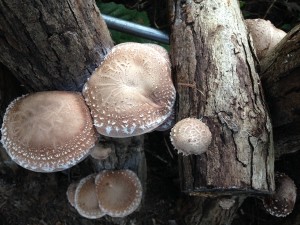 Harvest: Once you start to see the mushrooms unfurl their outer edge (typically tucked under the mushroom cap), it is time to pick mushrooms. At this point, the mushroom is in the early phase of releasing its spore. Simply cut them off at the log, brush off any debris and either eat them fresh, store them in the fridge for up to two weeks, or dry them to use for months to come.
Harvest: Once you start to see the mushrooms unfurl their outer edge (typically tucked under the mushroom cap), it is time to pick mushrooms. At this point, the mushroom is in the early phase of releasing its spore. Simply cut them off at the log, brush off any debris and either eat them fresh, store them in the fridge for up to two weeks, or dry them to use for months to come.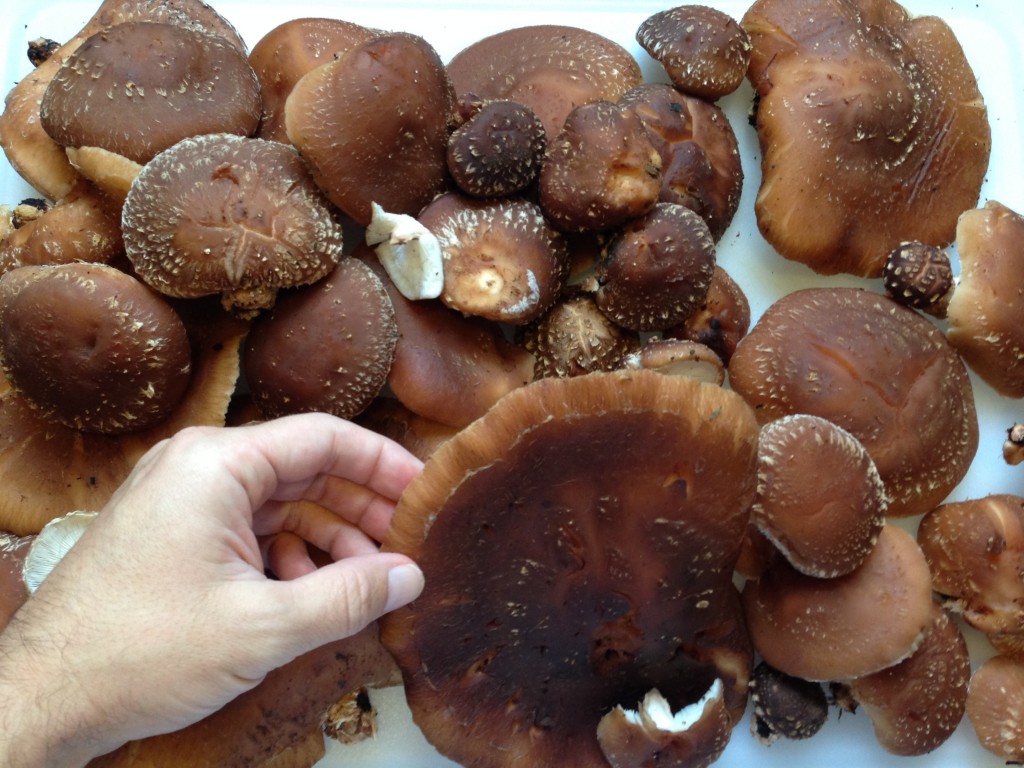
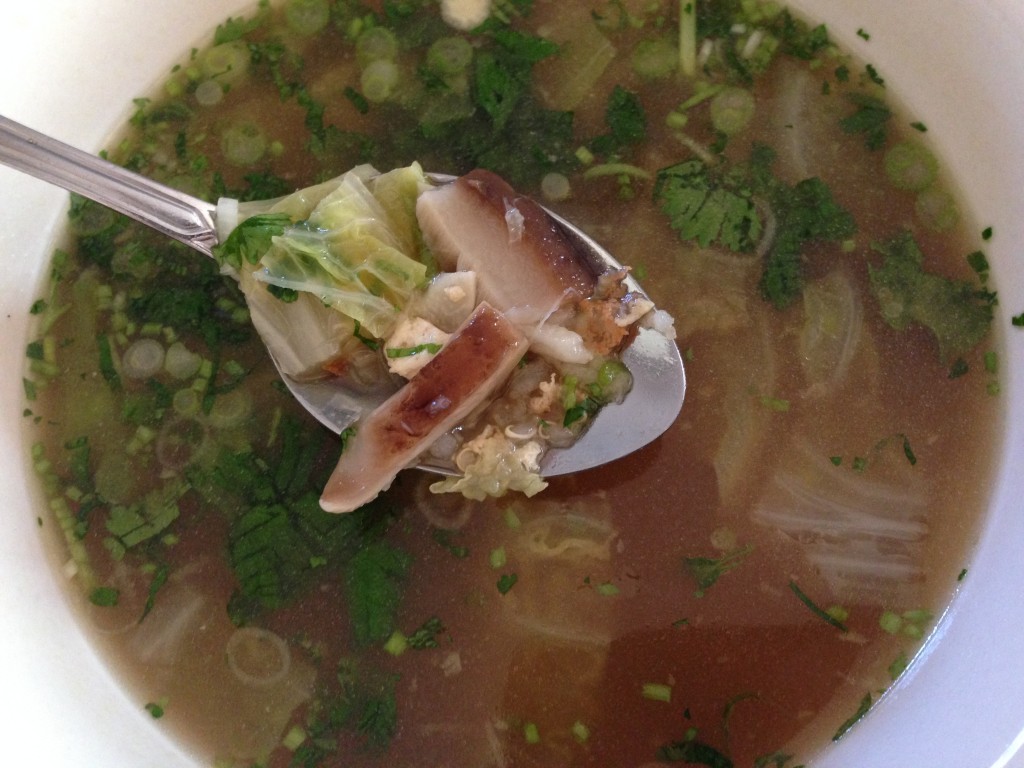
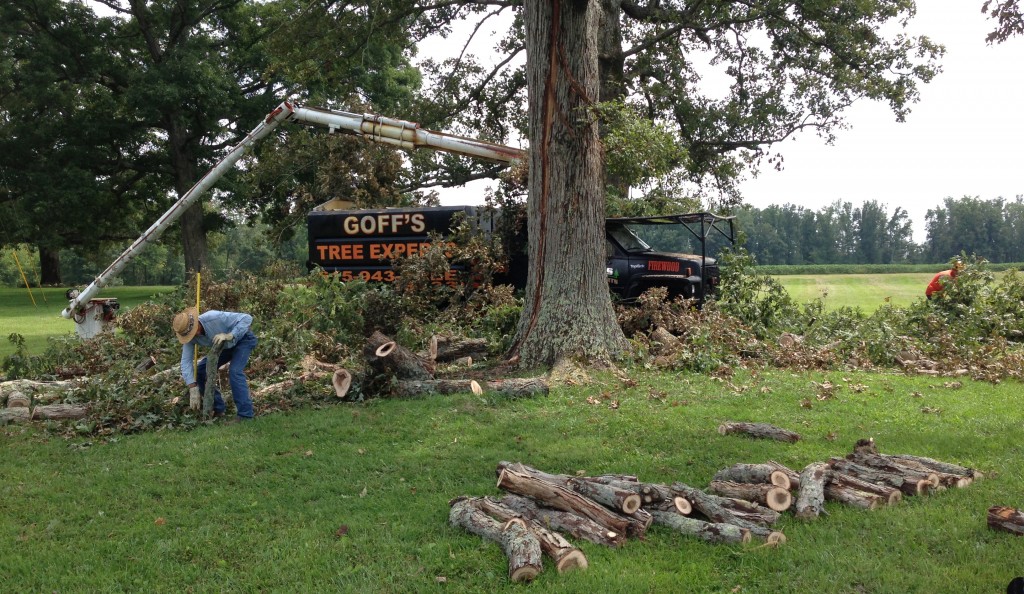
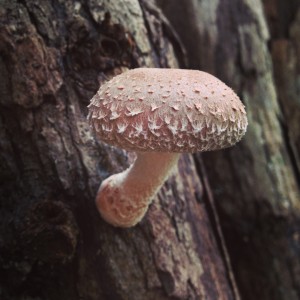 If you had a White Oak, Red Oak, Hickory or Sweet Gum tree that recently fell victim to storm damage, we can help you cut it up and remove as much as we can safely. We aren’t a professional tree service, but we can work with a tree service of your choice or cut up 4 inch or greater diameter logs they leave for us. In exchange for the logs we take, we will bring you a few of the
If you had a White Oak, Red Oak, Hickory or Sweet Gum tree that recently fell victim to storm damage, we can help you cut it up and remove as much as we can safely. We aren’t a professional tree service, but we can work with a tree service of your choice or cut up 4 inch or greater diameter logs they leave for us. In exchange for the logs we take, we will bring you a few of the 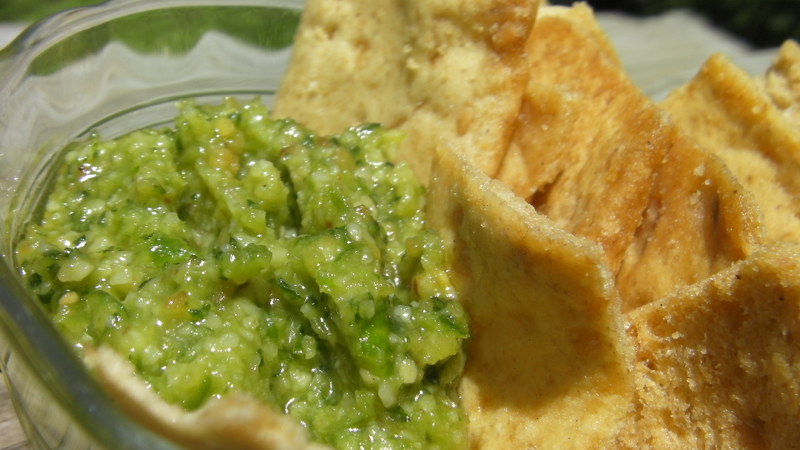
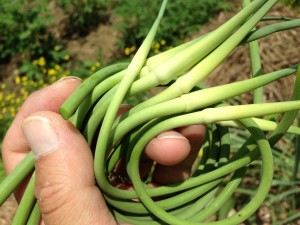 We cut the scapes off to force the plant to send its energy to the bulb, remove the flowering top and use them much like chives in food. They have an amazing fresh flavor that isn’t as strong as garlic.
We cut the scapes off to force the plant to send its energy to the bulb, remove the flowering top and use them much like chives in food. They have an amazing fresh flavor that isn’t as strong as garlic.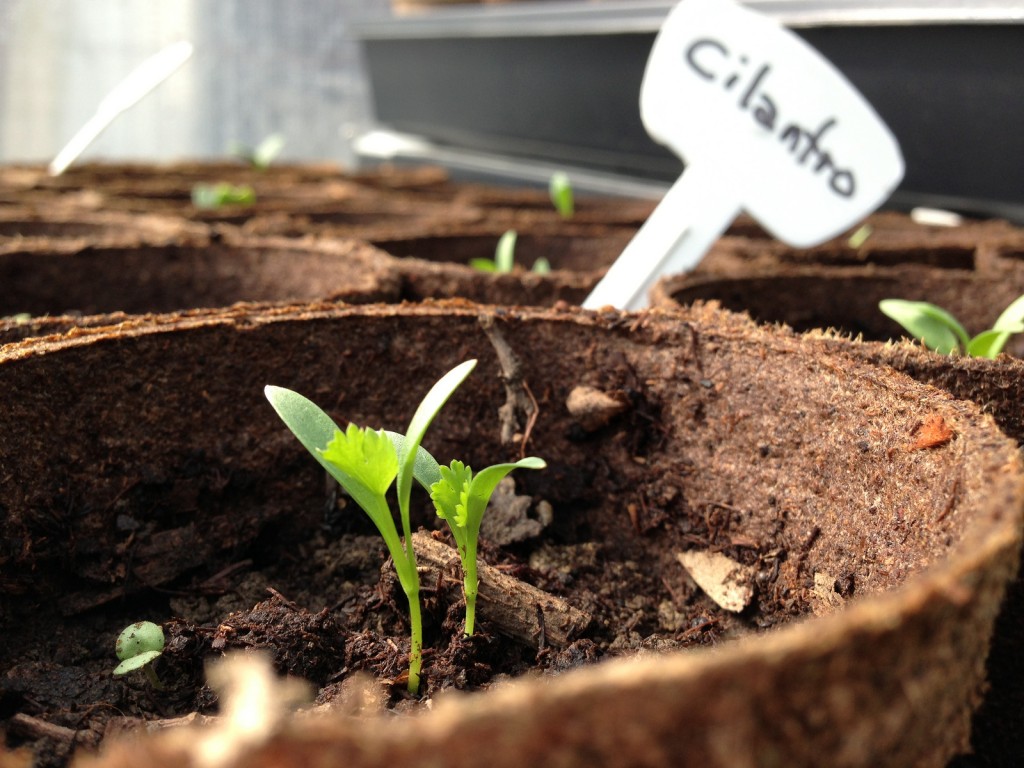

 Organic farming practices focus on sustainable food production methods that condition and improve the life of our planet’s soil while producing healthier food choices. These practices (cover crops, composting, no-till methods) decrease dependence on harmful inputs and energy use while harnessing the power of nature’s perfect design.
Organic farming practices focus on sustainable food production methods that condition and improve the life of our planet’s soil while producing healthier food choices. These practices (cover crops, composting, no-till methods) decrease dependence on harmful inputs and energy use while harnessing the power of nature’s perfect design.